Geneva State Park is in Ashtabula County, Ohio and occupies two miles of the Lake Erie shoreline. The park is 698 acres in size. Overnight accommodations provided at the park include the Lodge at Geneva, cottages, deluxe cedar cabins, and campsites (both electric, and non-electric). The marina has a deli, a canteen and a fueling station You can also buy fishing licenses, bait and tackle supplies, or arrange for boat and trailer storage. Other features of the park include a sandy beach, an archery range, and six miles of multi-use trails (two miles of which are paved). During the winter under proper weather conditions, visitors can use the snowmobiling trail, or enjoy cross-country skiing, snowshoeing, or ice fishing.
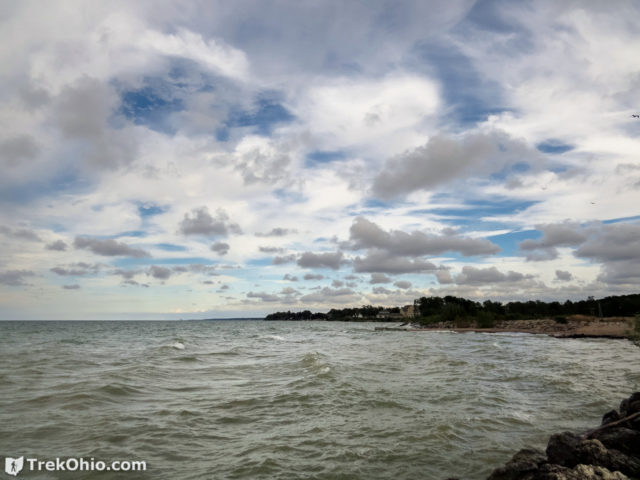
Getting Oriented
We decided to explore the hiking trails at Geneva State Park during the off-season, so we arrived just after Labor Day. An advantage to going during the park’s off-season is that our lodgings cost somewhat less. The biggest disadvantage was that most of the restaurants in the nearby village of Geneva-on-the-Lake had just closed for the year.
While at the lodge, we discovered that we could go on a naturalist-led hike of the park’s trails, so we decided to try that. Our guide pointed out various critters and plants and discussed the habitats that we passed through. I have enclosed a photo of one of the trail signs that we passed while hiking. The trails were well marked; whenever we reached one of the letters on the map, there was a trail sign next to the trail, so it was easy to stay oriented.
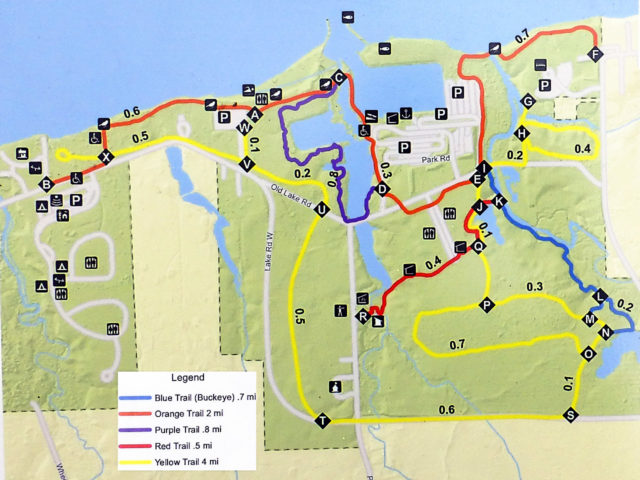
Besides hiking, we also explored various points of interest around the park. I will start by doing a survey of the park’s various features, and I’ll end with a discussion of our hike.
The Lodge and Conference Center at Geneva-on-the-Lake
We booked a room at the lodge and found the accommodations to be quite agreeable.
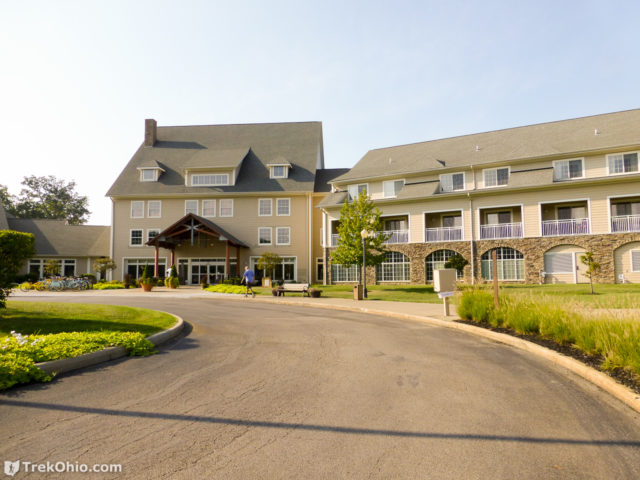
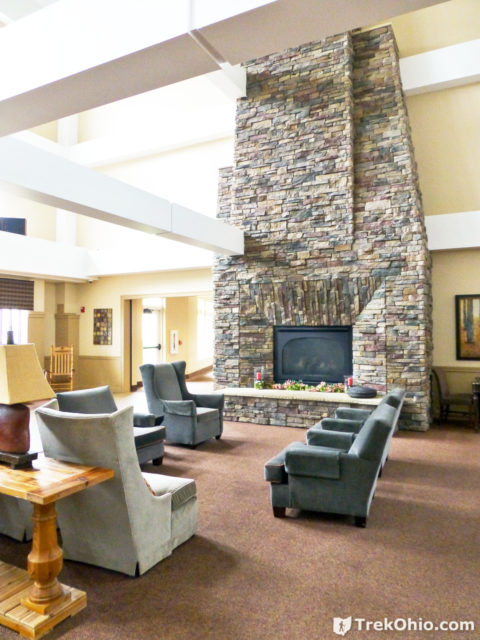
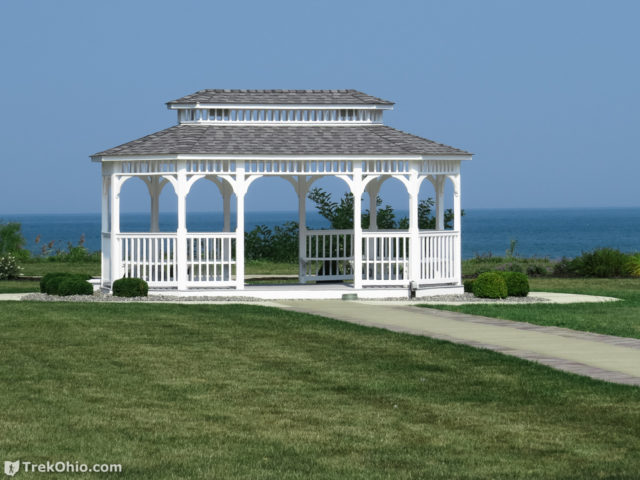
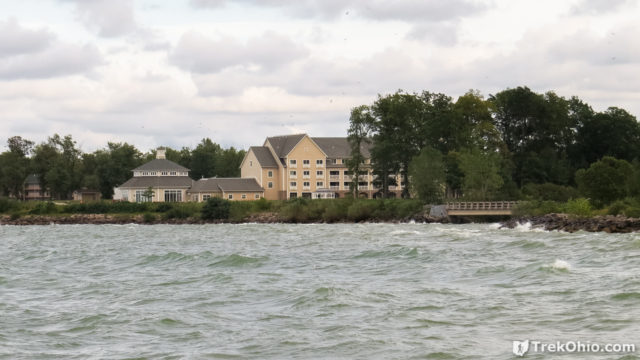
The Deluxe Cedar Cabins
There are twelve such cabins at the park. They are arranged in a large semi-circle around an enclosed picnic pavilion. The entire complex is situated next to the lake. Each cabin can accommodate four adults or a family of six.
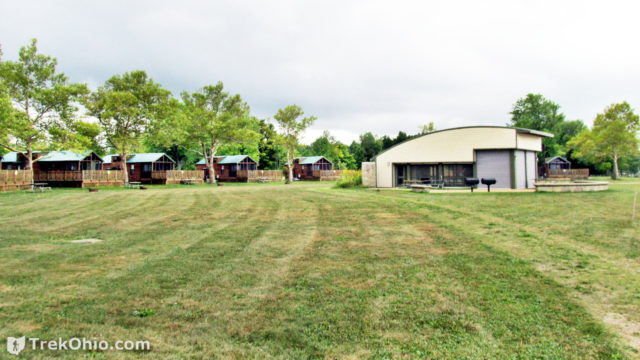
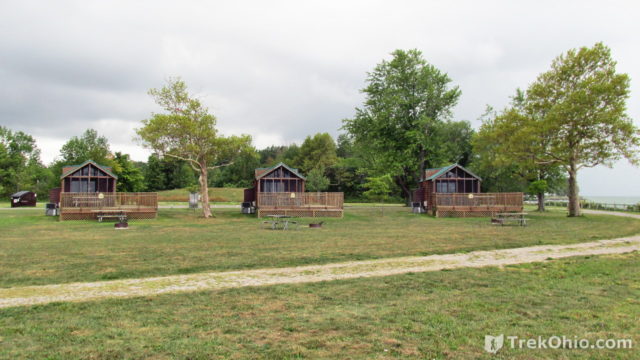
In addition to the cedar cabins, there are also 25 cottages that were opened to the public in June 2016. And there are campsites, 89 of which are electric sites, 4 are full hook-up sites, and 7 are non-electric sites.
The Marina
The marina has 407 slips and transient docking, as well as a six-lane boat ramp.
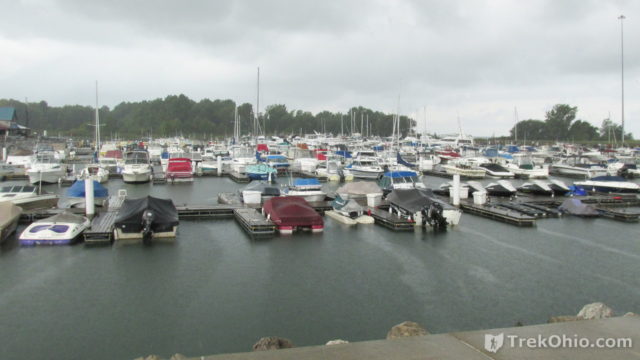
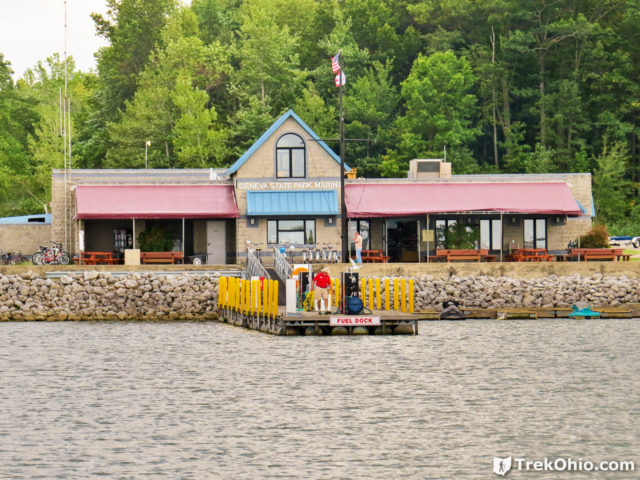
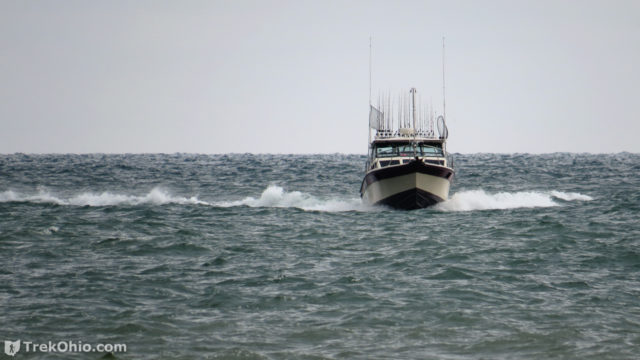
The Beach
I believe that the beach in Geneva State Park is called Breakwater Beach. It occupies 300 feet of Lake Erie shoreline. Since it was off-season and looked like it was going to rain, there was no one there while we were there. So the photos below aren’t representative of what the beach would look like on a sunny day in the summer.
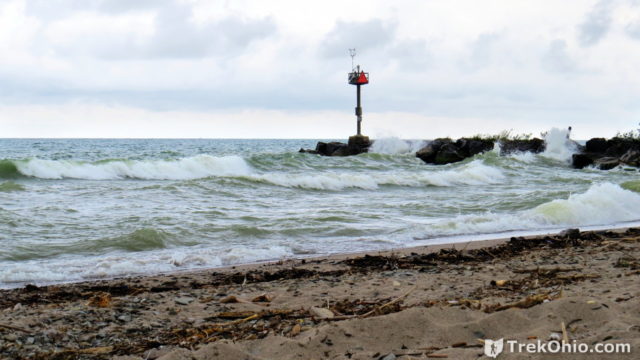
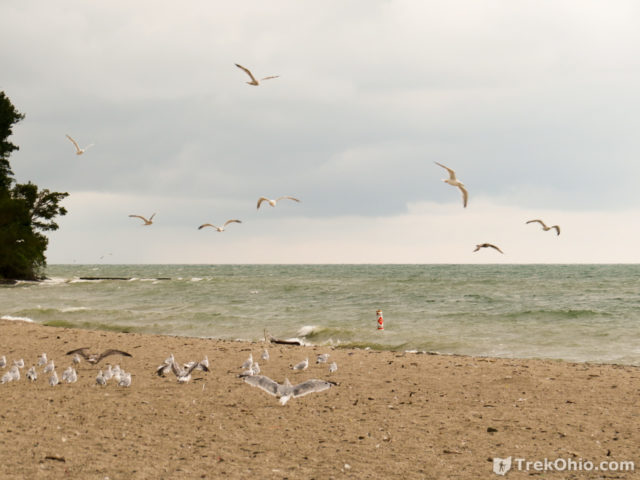
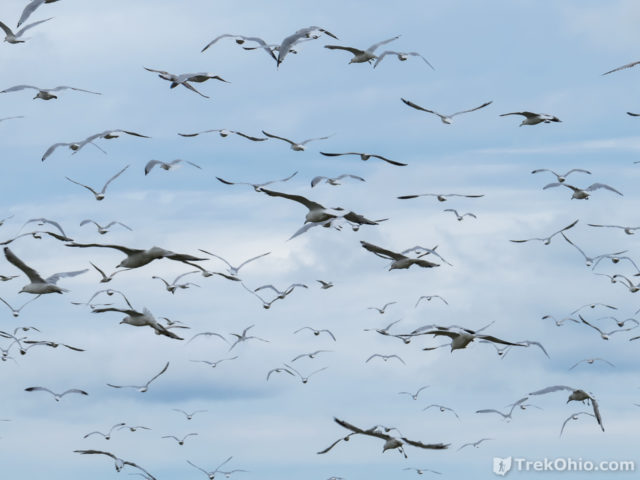
Since we do not have any photos of the beach in the summer when most people would be visiting, check out some of the photos that are returned when doing a Google image search for “Breakwater Beach” Geneva Ohio.
The Lighthouse
There is a small lighthouse at the end of a breakwater near the lodge. There is a paved path from the lodge to the lighthouse, and cyclists used this path to visit the lighthouse. Standing near the light house provided a nice view of the lodge and surrounding shoreline.
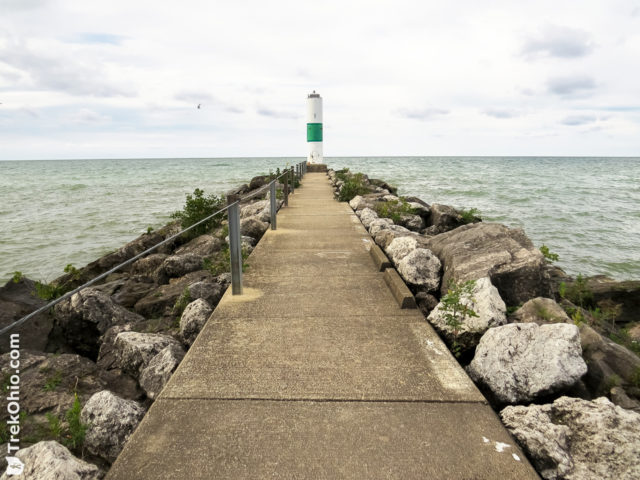
Archery
The archery range has an observation tower and picnic tables.
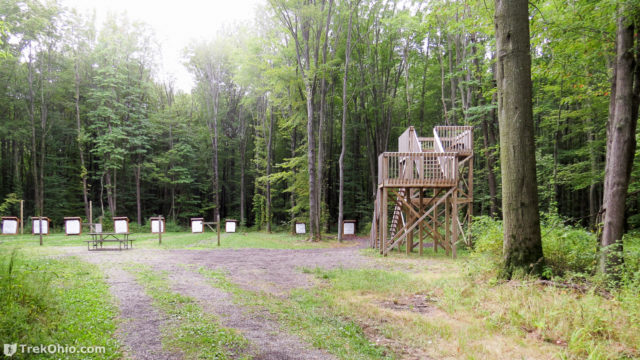
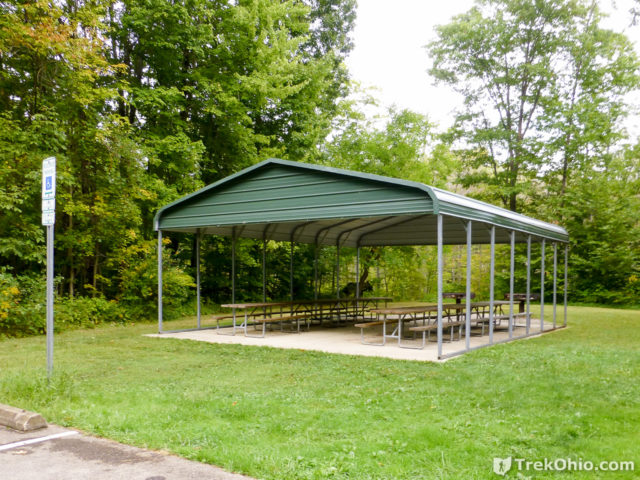
Guided Hike with a Naturalist
Four our guided hike, we met the naturalist at the scheduled time in the lobby of the lodging. One of the park’s trailheads lies just beyond the parking lot for the lodge. This is point “G” on the trail map near the top of this article, and we started out on the “Yellow Trail.”
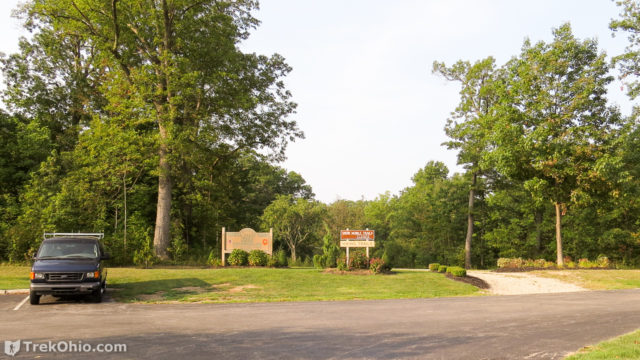
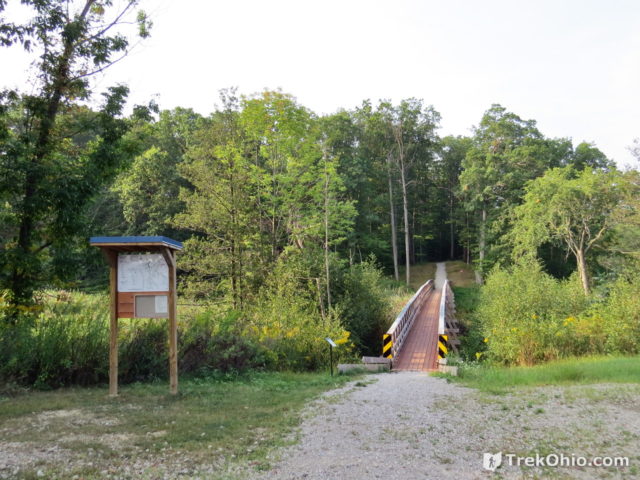
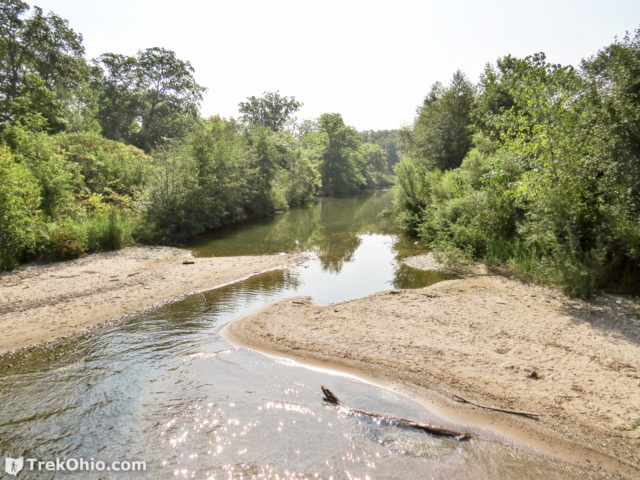
In our article on Mentor Marsh State Nature Preserve, we discussed the fact that common reed grass isn’t native to this region. It is appearing in a number of feeder streams and creeks around Lake Erie because salt mining has caused some of these waterways to become brackish. Since reed grass is salt-tolerant it has replaced the fresh water vegetation that originally would have grown here.
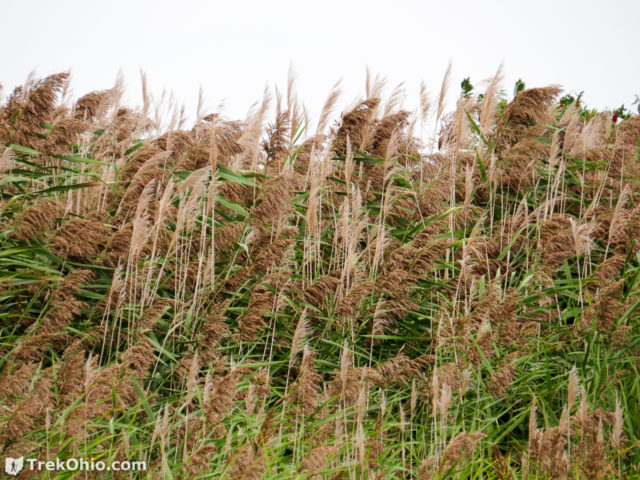
Some of the trail passed through woodland.
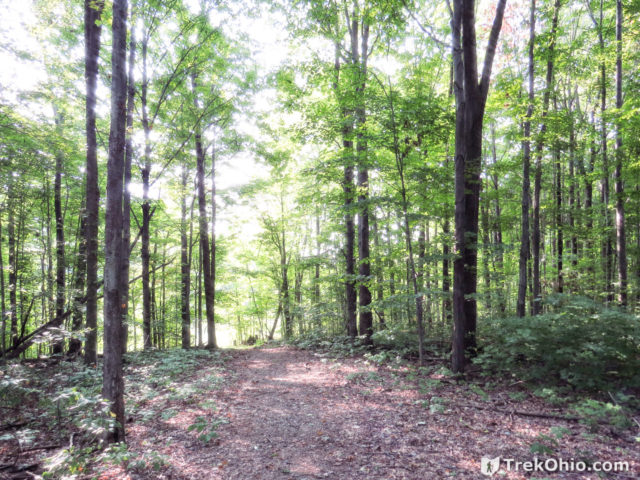
We also passed through a meadow towards a wetland area.
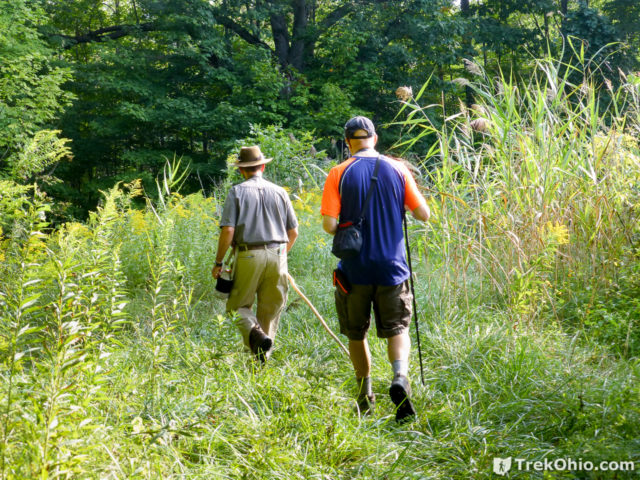
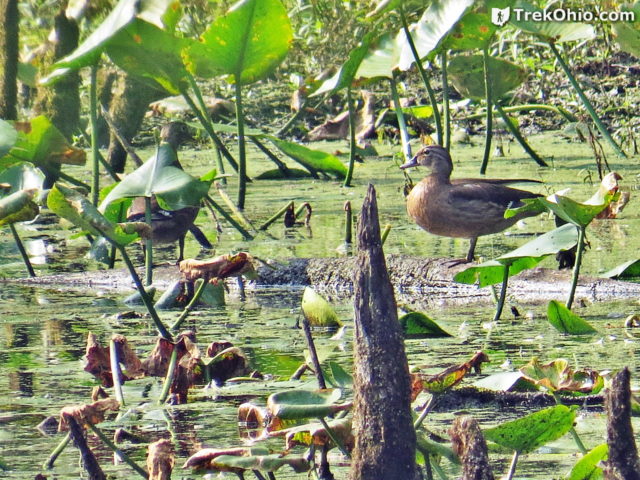
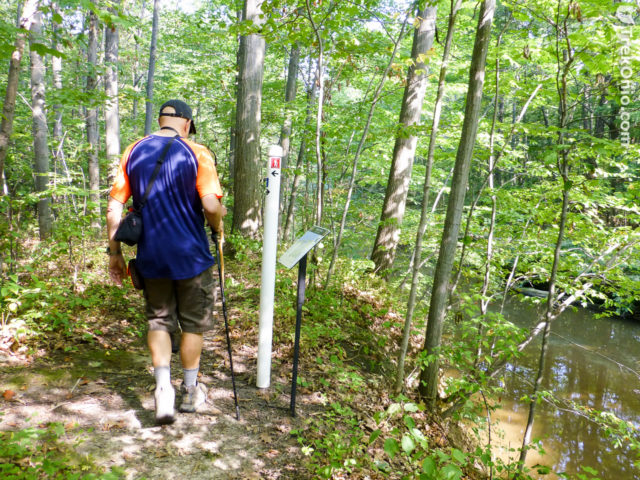
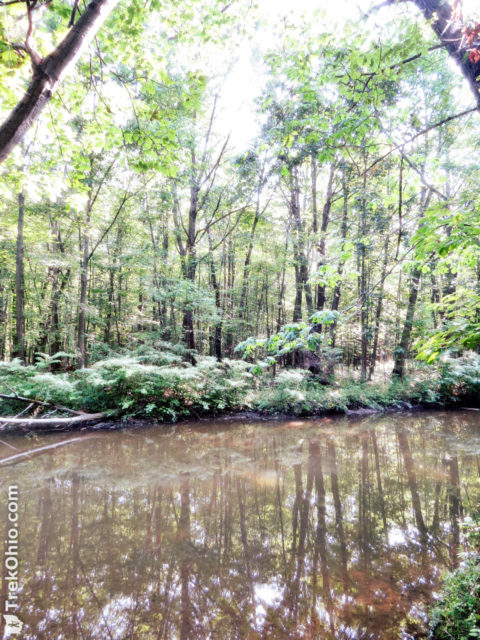
The naturalist picked up an eastern American toad, so we could take a closer look at him.
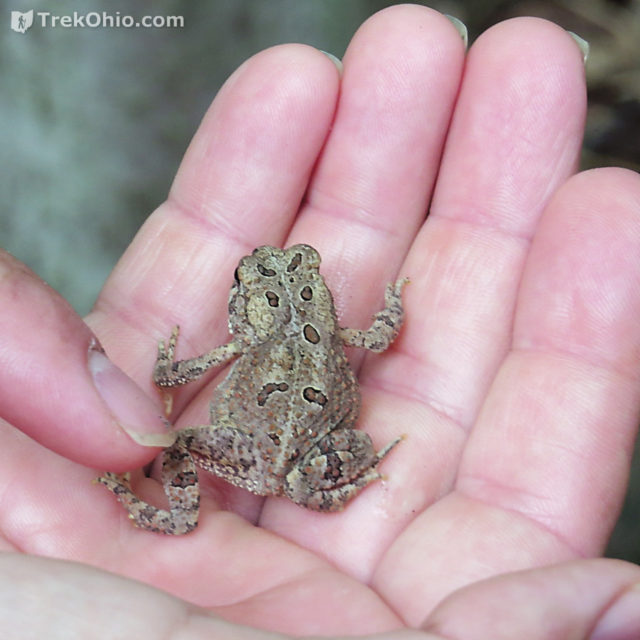
In the photo below, the naturalist is showing us an oak leaf which had a round structure attached to it. This round thing is called an oak apple gall. It’s called “apple” simply due to its round shape. Back when this oak leaf was just a leaf bud on a twig, a female wasp inserted a single egg into it. The chemicals and hormones produced by the wasp larva inside the leaf bud hijacks the leaf’s development causing it to produce this round thing called a gall. The gall provides the growing larva with both food and shelter until it is ready to emerge as a winged wasp from a tiny hole in the gall.
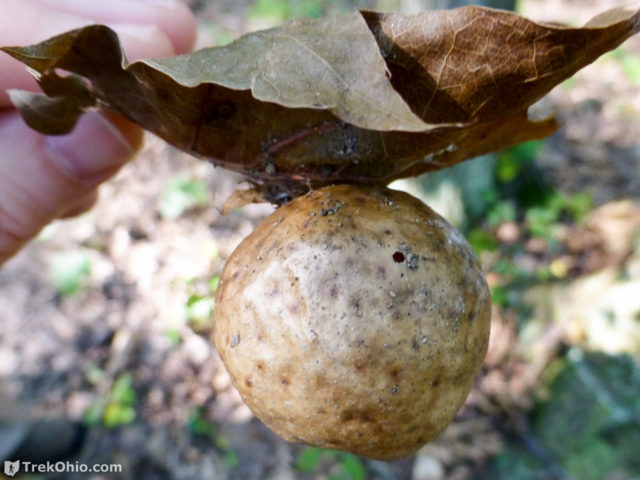
While the larva is still developing inside the gall, it is suspended in a seed-like structure in the middle of the gall. This seed-like structure is held in the middle of the gall by fibers that extend from the center where the larva is to the outer sphere of the gall. While the larva is still developing in the gall, the outer gall is green and the interior fibers are white, but after the wasp leaves the gall, the whole thing turns brown.
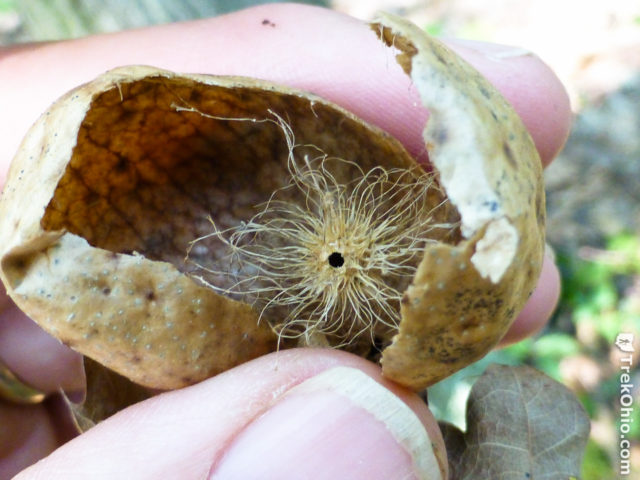
One of the feeder streams that we passed had a number of water striders zooming around on the surface of the water. These insects have tiny hairs on their legs which both repel water and trap air. This allows the insect to glide around on a tiny layer of air while taking advantage of the surface tension of the water. The two front legs immediately in front of the animal’s heads capture prey, such as mosquito larvae. The middle legs propel the insect, and the rear legs are used like rudders to steer.
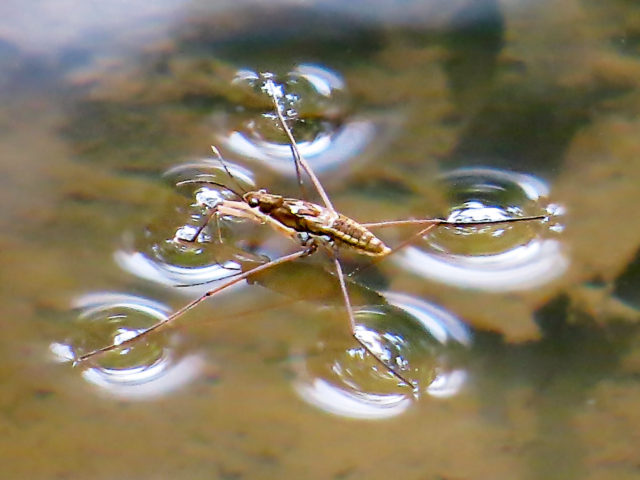
Marbled orb weavers have never been known to bite a person, so they are regarded as harmless to people. They build vertical webs in order to capture flying insects. Once the web is complete, the spider hides off to the side of the web tends to the web’s “signal” thread that will vibrate when the web has trapped something.
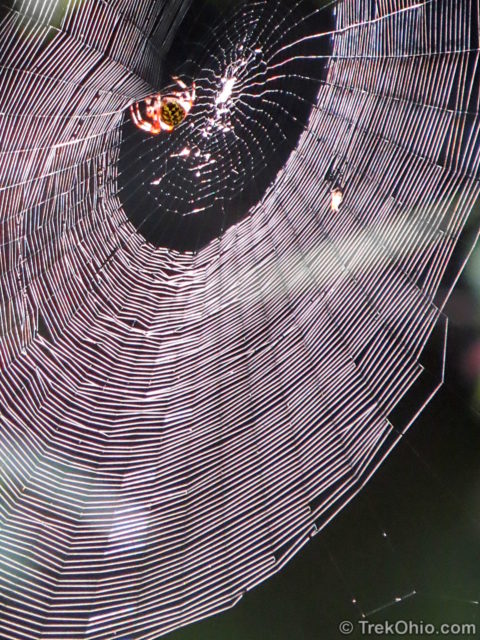
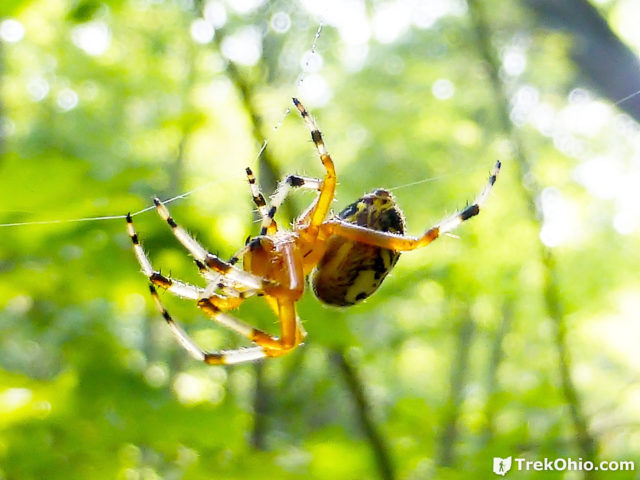
The wasp nest below is made by a different species of wasp than the one that makes the oak apple galls. Papery wasp nests like are made by wasps belonging to the family Vespidae which includes paper wasps, yellowjackets and bald-faced hornets. The queen which has hibernated over the winter begins the nest; she makes the paper in the nest by combining her spittle with wood shavings that she scrapes off using her mandibles. What you see below is the papery outer covering. Inside there are hexagonal cells in which her larvae develop. As her young begin to mature, they help her enlarge the nest. Only the mated queen survives the winter, so during the winter months the old nest falls apart, and in the spring the queen builds a new nest.
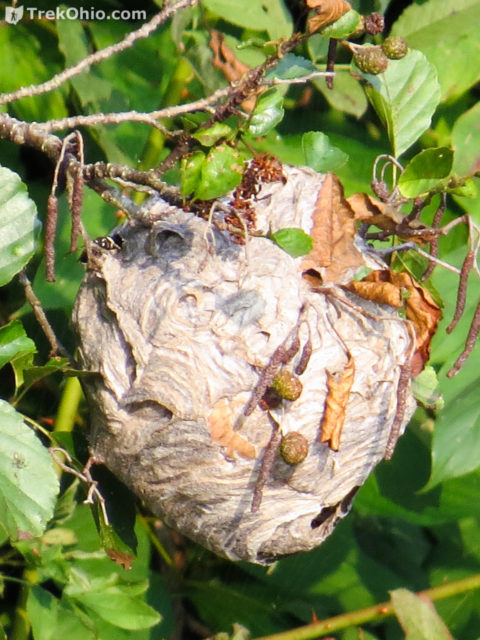
The plant below looks kind of like a strawberry, but it is not. For because of its resemblance it is sometimes called a mock strawberry. It is native to southern and eastern Asia (hence the other name, Indian strawberry). It has become naturalized in this part of the world, so you’ll see it on occasion while hiking. Although the fruit is edible, the fruit has little flavor.
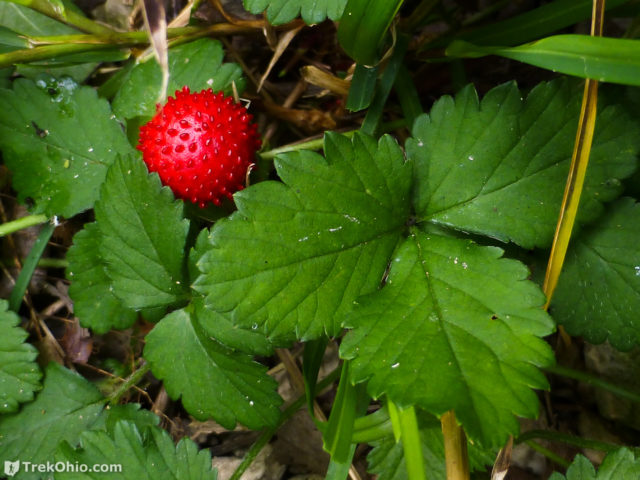
Below is the nut from a shagbark hickory tree. They are said to taste like a cross between a pecan and walnut. What you see below is the fleshy husk. Once you remove that you encounter a hard kernel. You have to break through that kernel and use a nut pick to get to the nut meat.
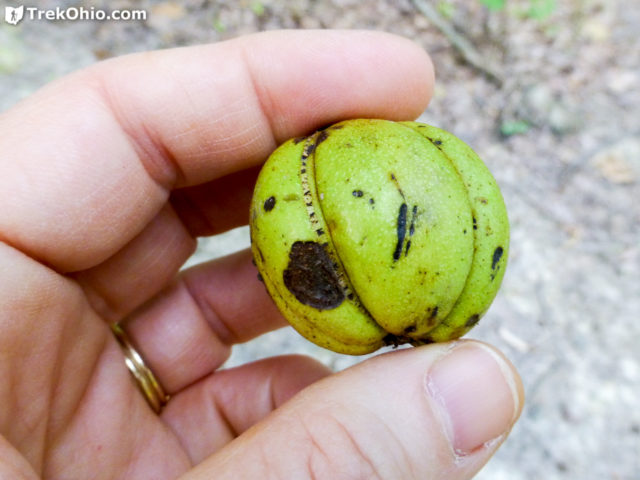
If you ever have the opportunity to go on a guided hike with a naturalist, either here or elsewhere in Ohio, I strongly recommend it. It was fun and interesting.
Other Recreational Opportunities
Robert Sylak posted a helpful comment in which he shared additional activities available to park goers. I will summarize his comment below.
- Recently-opened, long zip line through the woods
- Challenge ropes course for adults and for kids
- An option to tour local wineries by bus; participants are picked up and dropped off at the lodge (reservations required)
- Wine and beer tastings
- Dinner mystery theater
In addition he notes that both the restaurant and the lodge provide hands-on learning experiences for students enrolled in Kent State University’s Hospitality Degree Program.
Additional information
- TrekOhio: Ashtabula County Parks & Nature Preserves — This is the county where Geneva State Park is located; check out this page for links to the official website and for information on nearby parks and preserves.
- The Lodge at Geneva-on-the-Lake
- Ohio.org: Geneva State Park — There is a photo gallery here that shows what the area looks like during the summer.
- Xanterra Parks & Resorts: Geneva Marina
- Ohio State University: Oak Apple Wasp Galls
- Project Noah: Oak Apple Gall
- National Wildlife Federation: Water Strider
- Wikipedia: Gerridae — Water striders
- Ohio State University: Araneus Marmoreus information — Marbled orb weaver spider
- ThoughtCo.com: How Wasps Build Wasp Nests
- Wikipedia: Mock strawberry — Also known as Indian strawberry
- SeriousEats.com: Wild Hickory Nut
Location
- Main park entrance
-
- Address: 4499 Padanarum Road, Geneva, Ohio 44041
- GPS Coordinates: 41.8492634, -80.9864728
- Google Maps: View on map or get directions
- The Lodge at Geneva-on-the-Lake
-
- Address: 4888 North Broadway (SR 534), Geneva-on-the-Lake, Ohio 44041
- GPS Coordinates: 41.8575668,-80.9680244
- Directions: Maps & Directions for The Lodge at Geneva-on-the-Lake, Ohio
- Google Maps: View on map or get directions
More on Lake Erie
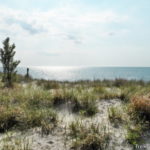
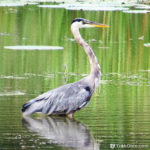
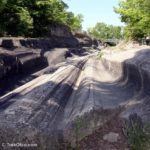
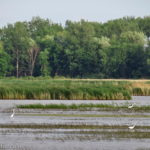
They just opened a long zip line through the woods and a challenge ropes course for adults and one for kids. For wine lovers, there is a wine bus that drops you off and picks you up from 4 local wineries. Reservations required. The restaurant and lodge are part of the Kent State Hospitality Degree program, giving students hands on learning. Dinner mystery theater and wine and beer tastings offered during the year. An amazing place. A bit pricey though, but worth it.